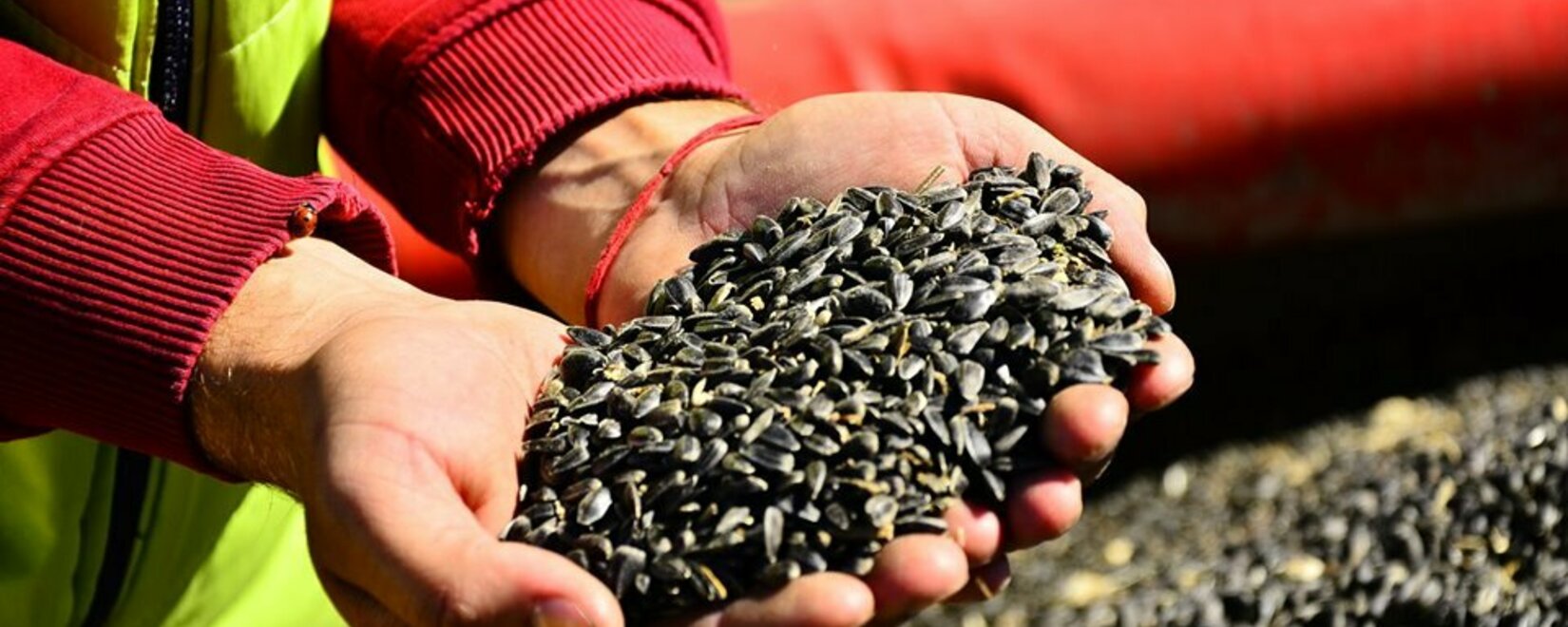Just a few years ago, crops such as soybeans, rapeseed, and curly flax were considered niche, but today hundreds of thousands of hectares are occupied by them in the Altai Territory, and even more by sunflower crops. This indicates a great demand for oilseeds from processors and, accordingly, the interest of our peasants. But the latter are worried about prices that are constantly jumping. Experts from the Grain of Siberia forum, which was recently held in Barnaul, tried to guess them.
Outgoing season
One of the best domestic experts on the oilseeds market, General Director of the ProZerno company Vladimir Petrichenko, began his speech with the statement: Russia produces more oil than it consumes, so it is important to know the situation on the world market, where palm oil accounts for the largest sales volume. After the start of the SVO, prices for it fell, but remained at an acceptable level, and they were about to go to another small hole, but a change in climatic conditions in the western part of the Pacific Ocean led to a positive change in prices for palm trees.
For many years, rapeseed was considered a win-win crop among farmers, but last season its prices deeply disappointed market participants. Vladimir Petrichenko believes that, given the good harvest of this crop in Europe, the situation will continue, but worse results are expected for other large producers. And instead of 88.5 million tons, 86 million tons are predicted, or maybe less. So the disappointment of last season is put aside. And we will see prices up to 500 euros on the French International Exchange.
In May, when it became known that soybean production plans for this year amounted to 410 million tons, the market collapsed in anticipation of such supply. But three months later it became clear that the record would be more modest than expected, and this fact began to have a more positive impact on soybean prices.
– They are at the level of $550 in the ports of Brazil and Argentina. “I don’t think they will go down, since production is still affected by negative factors,” the expert suggests.
A strong positive picture has emerged on the sunflower market, although there are negative scenarios for oil and meal. This happened in the Black Sea region, when production in Ukraine was stopped and large carry-over stocks accumulated in Russia. And now they will be “chewed” for several seasons.
If earlier Petrichenko assumed that in Russia the outgoing season would end in September with reserves of 1.2–1.3 million tons of sunflower, then after exiting the grain deal, Russian oil exports increased. And instead of the predicted 3.7 million tons, sales will be about 4 million tons. Therefore, production will not be 6.2, but 6.4 million tons, and raw material reserves will be reduced to 0.8 million tons. At the same time, Ukraine, with domestic consumption of 360 thousand tons, will export a record 5.5 million tons of sunflower oil.
What about the future harvest?
The harvest of oilseeds for the 2023/2024 season has begun in Russia.
According to the calculations of the general director of ProZerno, at least 16.6 million tons of sunflower will be harvested in the country, which is 250 thousand tons more than last year. Here you can add 1.8 million tons of seeds from new territories. The soybean harvest is expected to be at last year’s level – 6 million tons. And due to the reduction in plantings, there will be 4 million tons of rapeseed, which is 0.5 million tons less. Curly flax crops have been reduced even more significantly; accordingly, we will not have 570 thousand tons compared to the last season.
In the Altai Territory, according to Petrichenko’s forecasts, 854.6 thousand tons of sunflower will be threshed, which is 5% lower than in 2022, soybeans will be harvested 184 thousand tons - 4% less, the flax harvest will be a quarter less - 201 thousand tons , and two times less rapeseed is expected - 148 thousand tons. Last year, the price for it collapsed, and accordingly, less of it was sown.
After Russia left the grain deal, a certain recovery of the sunflower oil market began - from $750 to $900 per ton in the Black Sea ports. But it is unlikely to rise in price above 1150 $/t. Thus, Vladimir Petrichenko does not see a collapse in export prices.
Now the price for sunflower in the European part of Russia is at the level of 29.1 thousand rubles/ton including VAT; from the beginning of the new season it may slide down to 27 thousand rubles/ton with VAT for the new harvest. And then an increase to 30-33 thousand rubles is possible.
“But we won’t see it higher because of the export duty, which will restrain the price of oil, meal, and sunflower,” the expert warns.
He considers oilseed flax to be the most marginal crop this season. Demand for it remains, but production has decreased. In Kazakhstan, flax costs 34.5 thousand rubles per ton, and our prices will rise to this figure. But since the main buyer of Russian flaxseed oil is China with its unpredictable trade policy, Vladimir Petrichenko forecasts growth with caution.
Everything is fair
Director for raw material procurement of the Blago group of companies, Viktor Pashkov, presented to the event participants his vision of the current situation with the formation of prices for oilseeds in the 2023/24 season in Russia and, in particular, in Altai, where the company is the largest sunflower processor and controls
oil extraction plants in Biysk and Barnaul.
He gave a formula by which the cost of sunflower is calculated. The starting point is the price of finished products on the world market. For Altai - in one of the ports of China. The duty on oils, shipping and processing costs are deducted from this figure.
The Ministry of Agriculture of the Russian Federation has already announced that until August 2024 the formula for calculating the export duty on sunflower oil will not change, and, according to it, the rate for September will be zero. But transportation costs are only growing.
– If two years ago it cost 9 thousand rubles to deliver a ton of oil to the port, today it is already 16 thousand rubles and it is impossible to reduce it. Fuel and lubricants and tariffs are becoming more expensive,” complained Viktor Pashkov.
At the same time, the cost of processing is not growing so rapidly. It includes the cost of producing the oil plus the profitability with which the company can develop. According to the purchasing director, it is 4.5 rubles per kilogram of product. He also added that such profitability allowed the Biysk oil extraction plant to operate normally.
The most important factor is the exchange rate of the national currency. It is calculated as the average value of the Central Bank exchange rate from the 20th to the 25th of the month.
According to the forecasts of Blago Group, the cost of sunflower oil will increase.
– In September it will be approximately $975 and in a year it may reach the level of $1135. “We don’t see the prerequisites for an explosive rise in prices,” said Viktor Pashkov, adding that palm oil will become cheaper, since it is now unreasonably expensive, and rapeseed oil will be guided by the price of oil.
Using his formula, the purchasing director estimated that at a dollar exchange rate of 93 rubles, Blago Group of Companies could purchase a ton of seeds for 29,863 rubles excluding VAT.
Our business is such that today we won in one transaction and lost in another. From the moment of purchasing raw materials from the supplier to the moment of receiving money for the sale of oil, about 90 days pass. How the ruble exchange rate and the market will change during this time is unknown. Our work is full of risk. The main thing is to be in the black in the end.
- I urge agricultural producers not to expect sky-high prices in the future. The experience of recent years shows that such a strategy is not winning for anyone. It is better to sell products evenly throughout the season, this will allow everyone to work and earn money in peace, Victor Pashkov convinced the forum participants.
Meanwhile, Vladimir Petrichenko noted that in the 2022/2023 season, the profitability of Russian sunflower oil processors increased on average by 10-15% compared to the previous season due to the fact that they were able to purchase cheaper sunflower seeds.

 Trading platform
Trading platform 
 Monitoring
Monitoring  Express applications
Express applications 
 Fork Work
Fork Work 
 Service
Service  News
News  Directory
Directory 
